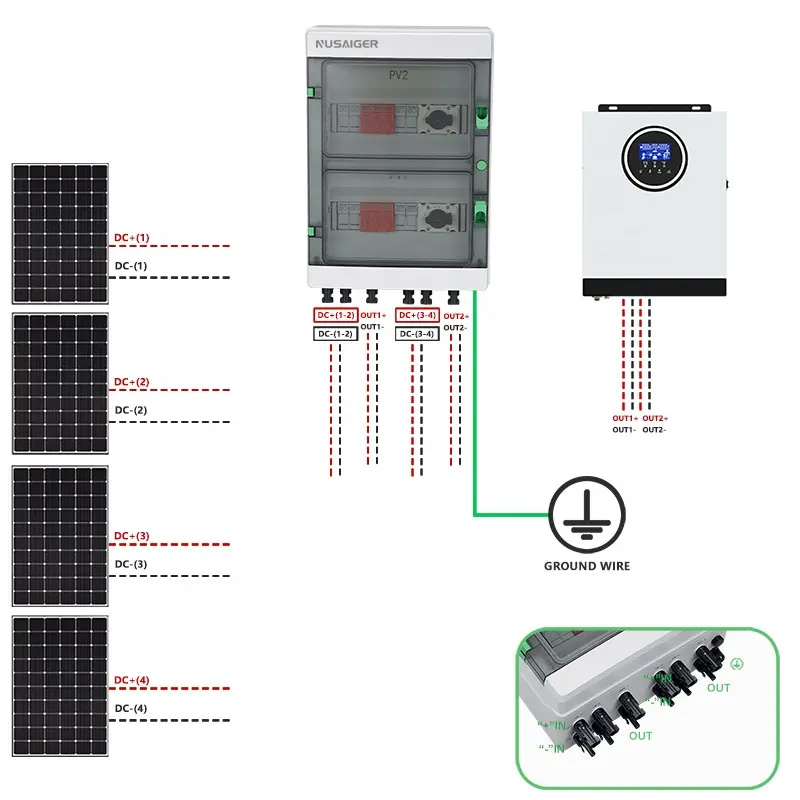How to Choose the Right PV Combiner Box for Your Application
Choosing the right PV combiner box is critical to the performance, safety, and efficiency of a solar power system. With so many options on the market, understanding the key selection factors ensures that your system functions optimally, avoids downtime, and remains compliant with safety codes. This comprehensive guide breaks down the technical, environmental, and budgetary considerations involved in selecting the best PV combiner box for your specific application.
1. Understand the Role of a PV Combiner Box
The PV combiner box aggregates incoming DC inputs from multiple solar panel strings and outputs them through a single or multiple set of cables to an inverter or charge controller. It includes fuses or breakers for each string, surge protection, disconnects, and sometimes monitoring functions. It helps reduce wire clutter, isolate faults, and simplify maintenance.
2. Determine the Number of Inputs
The number of strings in your solar array will directly influence how many input channels your combiner box needs. For residential systems, boxes with 2 to 6 inputs may suffice. For commercial or utility-scale applications, 12, 16, or even 24-string combiner boxes are common. Choose a box that not only meets your current string count but allows for future expansion if possible.
3. Voltage and Current Ratings
Match the combiner box to your system’s maximum open circuit voltage (Voc) and short-circuit current (Isc). Most PV combiner boxes are rated for 600V, 1000V, or 1500V DC. Never exceed these ratings. The current rating of each fuse should be sized 125% of the string Isc per NEC 690.8. Also, consider the total output current and make sure the busbars and terminals support it.
4. Environmental Ratings
Consider the installation environment: outdoor boxes should have an IP65 or NEMA 4X enclosure to withstand rain, dust, and UV. If your site is in an area with extreme temperatures or high humidity, ensure the combiner box is built with corrosion-resistant materials like stainless steel or powder-coated aluminum and rated for those conditions.
5. Built-in Protection Features
Quality combiner boxes include overcurrent protection devices (fuses or breakers), surge protection devices (SPD), and sometimes arc fault detection. Look for boxes with UL or IEC certification. SPD is especially important for areas prone to lightning or voltage surges. Disconnect switches are also a vital safety feature for isolating power during maintenance.
6. Monitoring and Communication Options
Some PV combiner boxes include monitoring features that allow you to track voltage, current, and temperature of individual strings or outputs. These smart boxes help in early fault detection and performance optimization. Check whether the box supports communication protocols like Modbus or RS485 for integration with your data acquisition system.
7. Ease of Installation and Maintenance
Choose boxes that are clearly labeled, include pre-installed DIN rails, terminal blocks, and cable glands for easy wiring. Hinged or removable doors, clear internal layout, and accessibility features will reduce installation and service time. Modular designs that allow quick replacement of components are a bonus.
8. Certifications and Compliance
Ensure the combiner box complies with relevant standards, such as UL 1741, IEC 61439, or NEC Article 690. Use only boxes that are tested and listed by recognized laboratories to ensure fire, electric shock, and fault protection.
9. Customization and Scalability
If your project has unique requirements (e.g., tracker integration, hybrid systems, or battery-ready setups), seek manufacturers offering customizable solutions. Scalable boxes with modular busbars or adaptable input modules can simplify future upgrades.
10. Budget and Warranty
While price matters, avoid cutting corners. A cheap combiner box may fail early, leading to costly repairs or system downtime. Choose manufacturers who offer at least a 5-year warranty, good documentation, and technical support. Consider lifecycle costs, not just upfront savings.
Conclusion
Selecting the right PV combiner box requires a balanced approach that considers electrical, environmental, and safety parameters. Don’t just buy based on price — prioritize quality, compliance, and suitability for your application. The right box will protect your investment, optimize performance, and support long-term solar system success.



